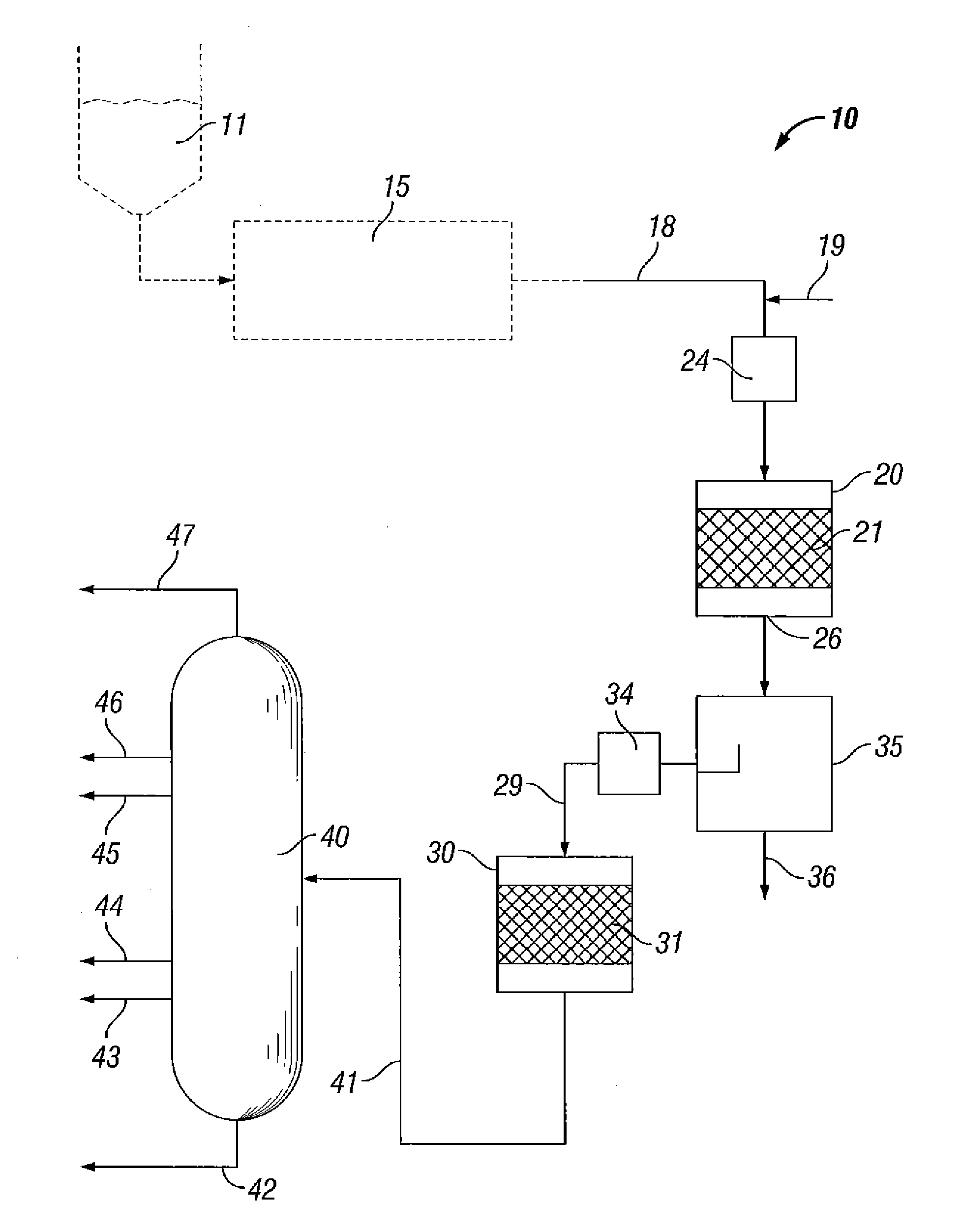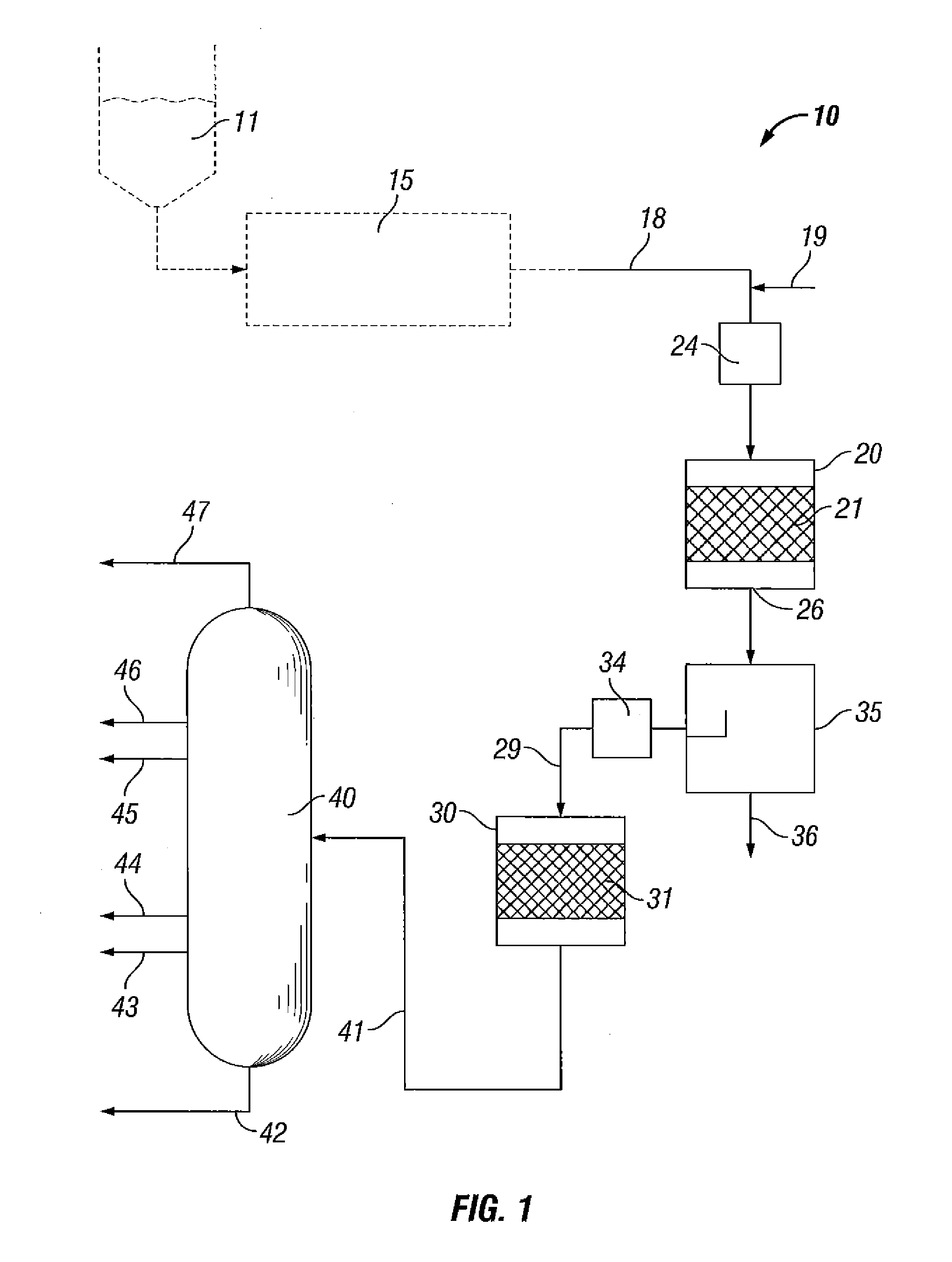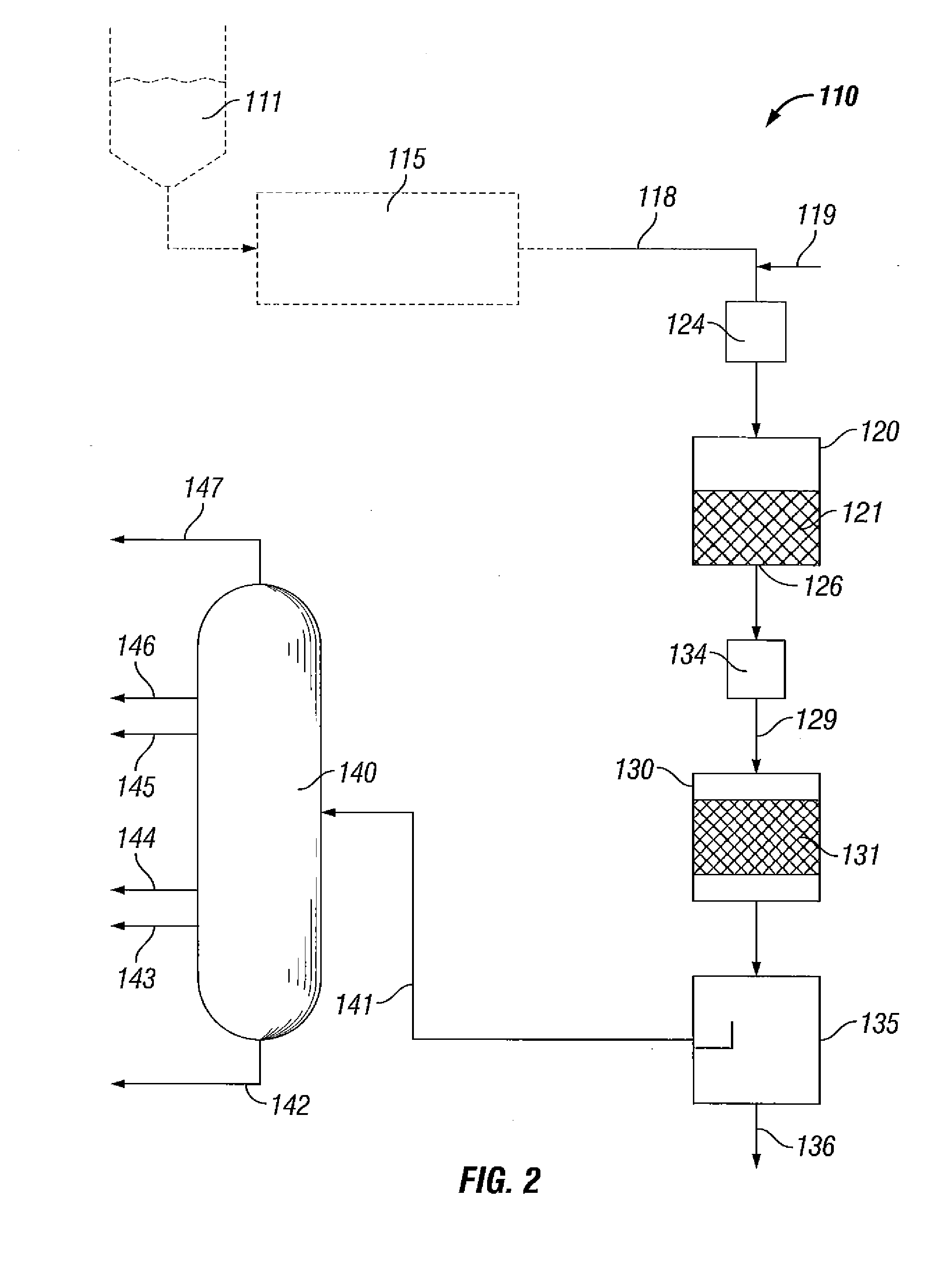Direct conversion of biomass oxygenates to hydrocarbons
a technology of biomass oxygenate and hydrocarbons, which is applied in the direction of hydrocarbon oil treatment products, fuels, separation processes, etc., can solve the problems of impracticality of capital and operating costs of processes
- Summary
- Abstract
- Description
- Claims
- Application Information
AI Technical Summary
Benefits of technology
Problems solved by technology
Method used
Image
Examples
example 1
Oxygenate Hydrocondensation
[0050]In one embodiment, a silica-alumina supported platinum-palladium hydrocondensation catalyst (Pt / Pd catalyst) was used to convert oxygenates to hydrocarbon fuels. A 70 wt % sorbitol in water mixture was diluted to 40 wt % sorbitol using distilled water. To ensure a safe operation, a ventilated enclosure encased the entire fixed-bed reactor (FIG. 9). Because sorbitol hydrotreating reaction required 1,200 psig, the reactor setup had several safety features. All gas cylinders and the reactor had pressure relief valves set at 1,450 psig. The ISCO™ syringe pump had an in-built pressure control system to cease pumping when the pressure exceeded 1,400 psig. The pump also had a pressure relief valve set at 1,450 psig. The reactor furnace controller had an override set at 500° C. Handling of all catalyst samples and separation of collected liquid products was conducted in a ventilated hood.
[0051]The model biocrude hydrotreating was conducted in a fixed-bed rea...
example 2
Hydrocondensation Plus Hydrodeoxygenation
[0063]As described with respect to FIGS. 1 through 3, it was recognized that the organic products from single stage sorbitol hydrotreating over Pt / Pd catalyst had significant quantities of undesirable oxygenates when the reaction temperature was 270° C. or less. Thus, Example 2 provides data for hydrocondensation in combination with hydrodeoxygenation to eliminate all oxygen. A mixture of oxygenates and hydrocarbons was collected by hydrotreating 40 wt % sorbitol over Pt / Pd catalyst at 270° C. This mixture was hydrodeoxygenated in a second stage over either the same sample of Pt / Pd catalyst or conventional hydrodeoxygenation catalyst at 340° C., 1,200 psig, and 0.6 h−1 (WHSV).
[0064]Table V shows density and elemental composition of products. Combined hydrocondensation with hydrodeoxygenation provides improved the product quality. The density of organic products decreased to 0.72 from 0.85 while the carbon content increased to 85 wt % from 73 ...
example 3
Lifetime Testing at 270 and 340° C.
[0074]In describing the invention, efforts have also been undertaken to add to the robustness of the process including efforts to extend the catalyst life, address issues related to the expected quality of the feedstock as compared to an ideal feedstock that was used in early efforts to develop the technology of the present invention, and optimize the process regarding GHSV through the catalyst bed. The catalyst is exposed to excessive amount of water during the first stage hydrotreating. Because the support of the catalyst is silica-alumina, it is important to determine hydrothermal stability of the support at typical reaction temperatures. To address this question, lifetime of Pt / Pd catalyst for hydrotreating 40 wt % sorbitol solution was studied at 270° C. and 340° C.
[0075]The catalyst showed constant conversion during sorbitol hydrotreating at 270° C., as shown in FIG. 8. Sorbitol conversion began at 91% and decreased to 88% during the first si...
PUM
 Login to View More
Login to View More Abstract
Description
Claims
Application Information
 Login to View More
Login to View More - R&D
- Intellectual Property
- Life Sciences
- Materials
- Tech Scout
- Unparalleled Data Quality
- Higher Quality Content
- 60% Fewer Hallucinations
Browse by: Latest US Patents, China's latest patents, Technical Efficacy Thesaurus, Application Domain, Technology Topic, Popular Technical Reports.
© 2025 PatSnap. All rights reserved.Legal|Privacy policy|Modern Slavery Act Transparency Statement|Sitemap|About US| Contact US: help@patsnap.com



